This article is a short tutorial on how install WebOS applications on your Palm Pre independent of the region they are intended for, e.g. install US only apps that do not even show up in the app catalog outside the US on your French / German / Spanish Palm Pre. The process is rather simple as it basically just exploits the current behavior of the App Catalog’s update mechanism. Continue Reading
Bing Maps Making an Impression
It’s not often that I write an actual post about something I just came across on the net. Usually I just share interesting news via Google Reader here and the ‘Feed Favs’ section on my front page, but this is something I was so impressed by that I just want to show you the video right here without much talk.
Microsoft has become quite innovative in my opinion over the past months. Ranging from creative, refreshing and productivity boosting changes and features in Windows 7, to an actually competitive new search engine called Bing and the recently announced Windows 7 Phone Series with a quite unexpected look & feel, Microsoft apparently also wants a piece of that online maps cake. The following video, which I came across here, shows some of the latest (yet to be published) features of Bing Maps, some of which a rather impressive and astonishing than just cheap copies of what Google Maps offers.
But see for yourself:
Update: What OpenStreetMap doesn’t have…
I didn’t actually think about this when I “rediscovered” OpenStreetMap the other day and wrote my blog post about it; there’s yet another feature that OpenStreetMap doesn’t offer… routing! I didn’t really notice that as I’m hardly using this feature on Live Maps or Google Maps, but in fact, there’s no from-to route finding service on OSM.
BUT luckily there is OpenRouteService, a free routing service that is based on (as you may guess) OpenStreetMap. Another great example of what to do with a free worldwide street database ![]()
OpenStreetMap! A great idea!
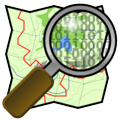 I’d like to help and spread the word about a project I actually came across quite a while ago but which I’ve rediscovered recently: OpenStreetMap (German version here). In short, this project is a community effort to create a copyright-free world map.
I’d like to help and spread the word about a project I actually came across quite a while ago but which I’ve rediscovered recently: OpenStreetMap (German version here). In short, this project is a community effort to create a copyright-free world map.
The look and feel is basically the same as with Google Maps (without the satellite coverage of course) but the big difference is, that OpenStreetMap maps are completely free. Not like Google’s maps which are “free” as in “you can do this and that with our maps BUT YOU’RE NOT ALLOWED TO …………………. <LONG TEXT FOLLOWING> …………”.
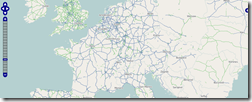 Of course they don’t have all the features of the big players like Google or Microsoft; there’s no Street View, no Bird’s Eye View and sadly but understandably no satellite coverage but the maps (and the data behind them) are completely free and you can use them for practically anything. You can even download the world database which the maps are based on onto your computer and use it for whatever you like. Besides, in some of the more crowded areas, OpenStreetMap maps are even more accurate then Google’s version, as you can see in the following picture. Continue Reading
Of course they don’t have all the features of the big players like Google or Microsoft; there’s no Street View, no Bird’s Eye View and sadly but understandably no satellite coverage but the maps (and the data behind them) are completely free and you can use them for practically anything. You can even download the world database which the maps are based on onto your computer and use it for whatever you like. Besides, in some of the more crowded areas, OpenStreetMap maps are even more accurate then Google’s version, as you can see in the following picture. Continue Reading
The Museum of Modern Betas
Yet another short spread-the-word post. I just came across the Museum of Modern Betas which basically is a list of the 100 most bookmarked (del.icio.us) software projects in the field of online Web 2.0 style applications.
The range is from file conversion, video encoding, web analysis to business travel and groupware tools. It’s a nice long list with a lot of entries on it you probably already know but I’m pretty sure there’s some projects on it you haven’t ever heard of but which you might find pretty interesting. It’s worth a visit!
Mindmapping: Free and web-based!
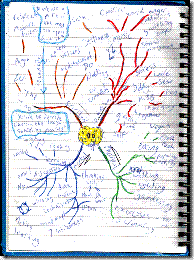 I’d like to point out the blog post found here. It’s about free mindmapping software. Since I’ve known and been a user of Mindmanager for years now, I was quite surprised by this blog post. I didn’t know either of the two pieces of software. An open-source freeware alternative to Mindmanager called FreeMind as well as an online Web 2.0 style alternative at www.mindmeister.com.
I’d like to point out the blog post found here. It’s about free mindmapping software. Since I’ve known and been a user of Mindmanager for years now, I was quite surprised by this blog post. I didn’t know either of the two pieces of software. An open-source freeware alternative to Mindmanager called FreeMind as well as an online Web 2.0 style alternative at www.mindmeister.com.
I don’t have much more to say about it. Just wanted to help spreading the word. Give it a try for yourself!
Make sure there’s no special character in your name if you’re planning to become a Tablet PC user
As a Tablet PC user I’m relying on stylus input and handwriting recognition a lot. So let’s start with the good news: Microsoft did a hell of a job with Windows Vistas handwriting input panel. Recognition accuracy is really astonishing and though some third-party product like Firefox leave room for improvement talking about the input panel’s integration, it works well and fast in most other situations.

Now the bad news. I can’t get that freakin’ thing to learn my name. I must admit there’s no way my parents could have known that I’d be using handwriting recognition on a computer one day when they named me over 20 years ago. So I can’t blame them for deciding on Jürgen.
As long as I’m using German as the selected input language on the input panel, I’m fine. But since I’m dealing with English most of the time and since I’m also talking to some Spanish guys every now and then, most of the time my input panel isn’t set to German. Unfortunately Microsoft didn’t consider that case as relevant and there’s no way of teaching Vista my name with the input language set to English, not even using the handwriting personalization tool as it won’t allow me to enter any characters that aren’t part of the selected language’s keyboard layout. Automatic learning and correction tools aren’t an option either since whatever I write on the input panel gets changed into the closest fit of a standard character. As soon as the correction tool is running out of close matches to "ü" it just comes up with not-so-close matches. This turn’s out to become an extremely funny game that in no way I can win.
Finally as a another little side note on handwriting recognition in Windows Vista let me mention that I started training the system (in English) using the handwriting personalization tool to improve accuracy even more. This again works great just that I can’t run this tool for any language other than English. Especially not for German, Spanish or French input. It took me a while to find that information on the web but turns out that this is in fact true. Handwriting personalization is only available for English, Chinese, Japanese and Korean.
To be precise, automatic learning of handwriting style and targeting specific recognition errors is available for these languages and only these. Automatic learning of vocabulary and teaching the system your handwriting style by feeding the system with handwriting examples is even supported for English exclusively. Check for yourself here.
Microsoft could really care a bit more about DETAILS!!!

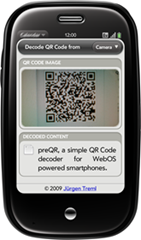
 I’ve recently been doing some research on current GPS devices since I broke my own about year ago. I used to use a
I’ve recently been doing some research on current GPS devices since I broke my own about year ago. I used to use a 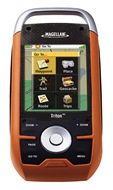 Long story short, I’ve never been to fond of the
Long story short, I’ve never been to fond of the